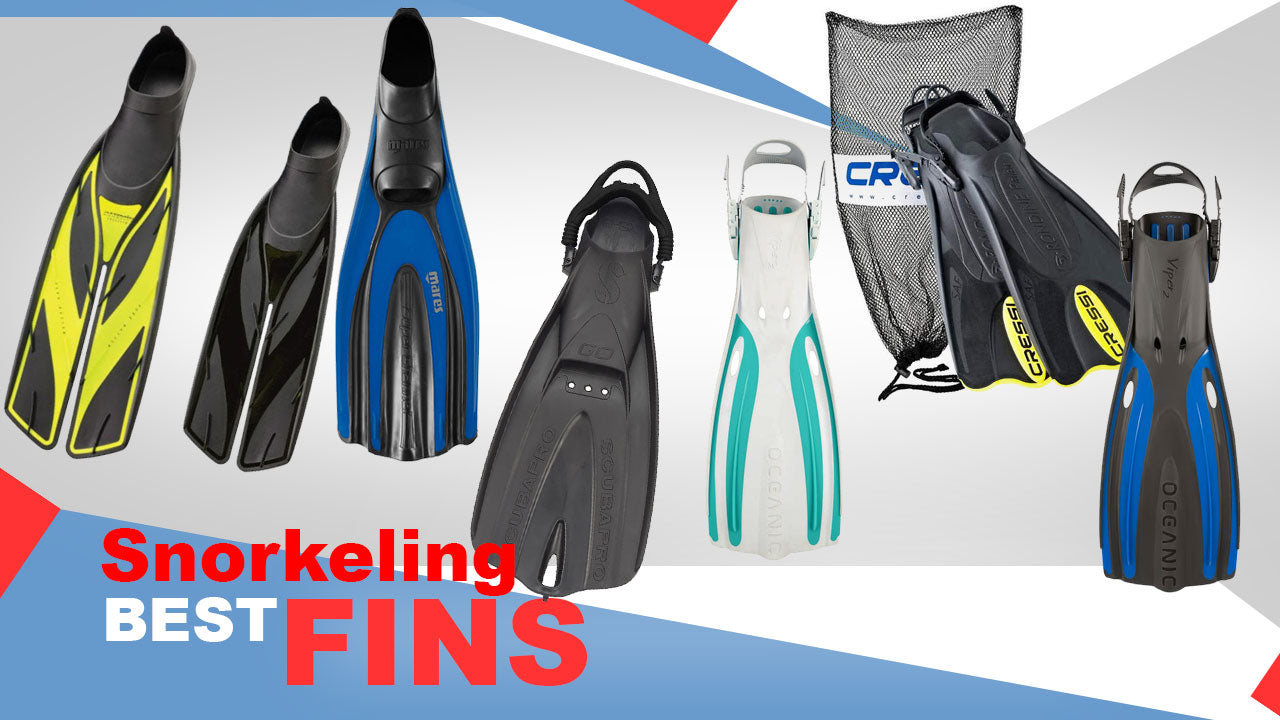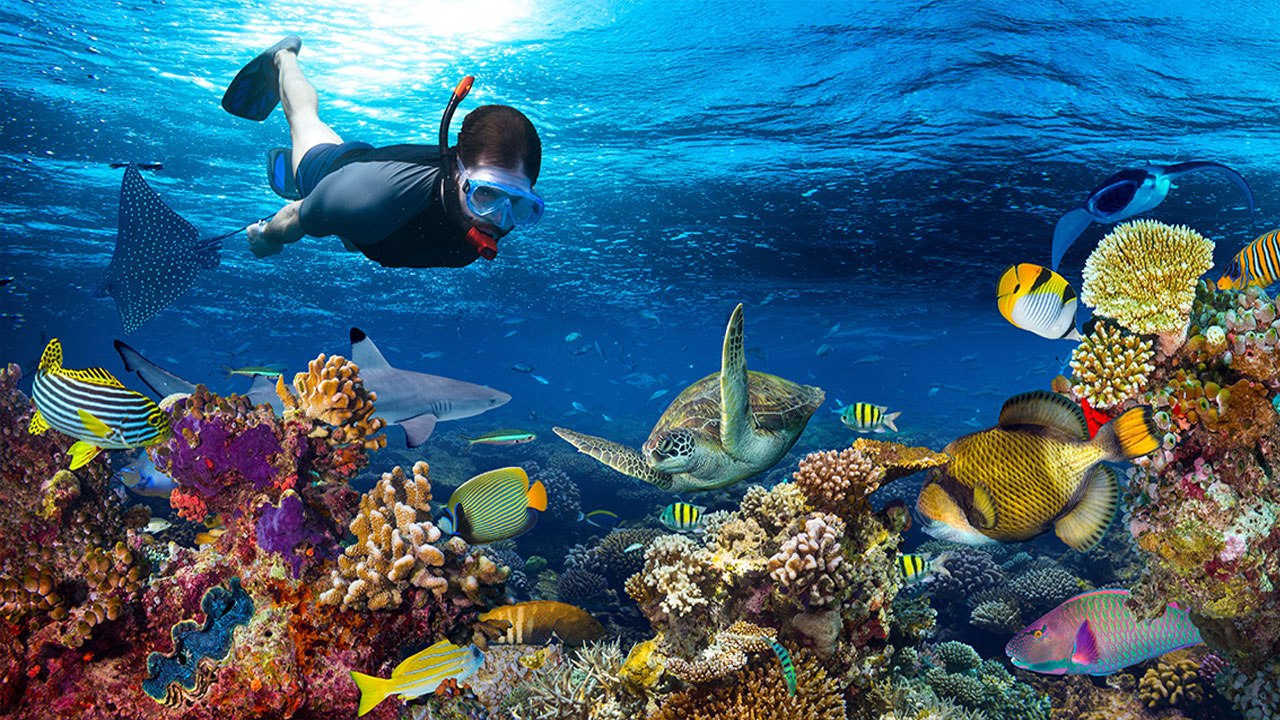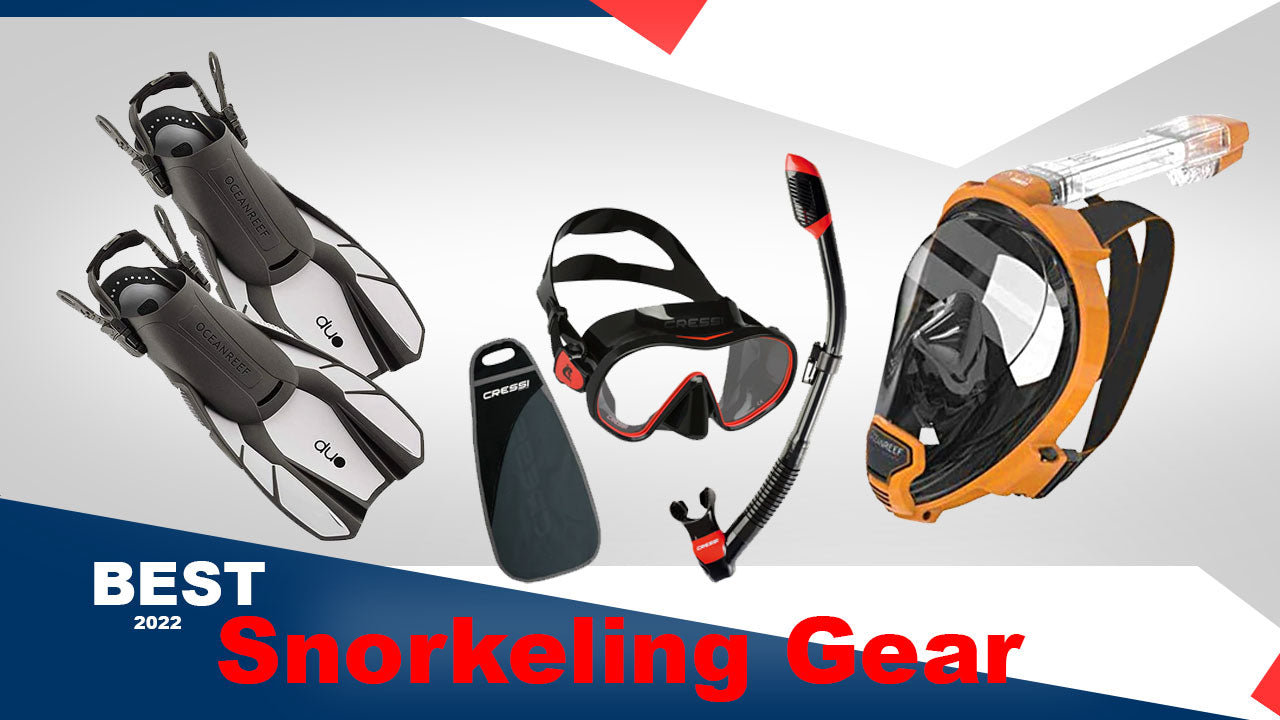Top 5 Snorkeling Tips for Beginners

Snorkeling is a fun activity and one of the easiest ways to peek into the underwater world. Unlike scuba diving, it requires no formal training, minimum equipment and is something almost anyone can try. That being said, poor first-time snorkeling experiences are pretty common. Anxiety, leaking or fogging mask, uncomfortable fins and water flooding your snorkel can all make the activity a bit miserable or even potentially dangerous for you. So here are a few tips that will help you avoid the most common beginner mistakes and enjoy snorkeling to the fullest.
1. Get Equipment That Fits
Having gear that doesn’t fit can cause a number of different issues. So, when renting equipment, it’s wise to try it on and check its condition before going out to the open sea. If you plan to do a lot of snorkeling during a particular trip, consider investing in your own equipment, that way you will be able to choose what suits you best and will always know the condition of the gear.
A simple test to check the mask fit is to place it up against your face (without using the strap), suck gently through your nose and then let go of the mask. If it has made a good seal it will stick to your face for a couple of seconds. Don’t suck too hard as that will just distort the skirt and give it a false seal. A properly fitting mask will seal with a gentle touch. Then you can wear the mask with the strap behind your head and see how that feels. Try moving your face muscles. Check the strap release system.
As for the fins, they should fit snugly, without hurting your feet. Fins that are too loose are likely to cause chaffing and painful blisters or even fall off in the water. Start by choosing fin size based on your shoe size. Try the fins on and do the shake test. Sit down and shake your foot around in all directions. The fin should feel secure but not rubbing or pinching anywhere. If it feels too tight with no movement at all, you should try the next size up. If there is a lot of movement when you shake your foot, go down a size and start again. If you think you’re in between sizes, get a pair of neoprene or lycra socks to wear under your fins. They will add padding and eliminate uncomfortable rubbing.
2. Learn Basic Mask and Snorkel Skills
Breathing through the snorkel can feel a bit weird at first, so it’s recommended that you wear your gear and swim around in a pool just to get used to the feeling. If you are on a beach, start by swimming in the shallow area before plunging into the deep.
You should also practice clearing water out of your snorkel and mask. Being comfortable performing these skills will help you stay calm in case your mask or snorkel get flooded when you are in deeper water.
Clearing your snorkel is very simple. All you need to do is blow firmly through your snorkel to force the water out the top. If your snorkel has a purge valve, water will also exit through the purge valve below the mouthpiece.
Another method, called the displacement clear, works if you want to dive down and have a snorkel without a purge valve. The displacement clear begins while you are still underwater. When you begin to surface, look straight up and exhale a small amount of air into the snorkel. As you ascend, the air will expand and displace the water. By the time you reach the surface, most if not all of the water will be cleared from the snorkel.
Another useful skill to master is getting water out of your mask. Surely, you can always surface to do that, however, if you’re in a situation where you’ve spotted something amazing and don’t want to risk losing sight of it, you’ll need to learn how to quickly clear your mask under water. First, inhale through your snorkel to get a full breath of air. Remember, if your mask was jostled loose by a wave, your snorkel may have also filled with water, so clear it before taking a breath. Then, press the top of your mask against your forehead with your palm or fingers. This creates a tight seal on top allowing you to expel the water from the bottom of your mask. Finally, exhale through your nose. The additional air in your mask will force the water out. A gentle breath should be enough to clear your mask. A harder, sudden burst of air may result in overpressurizing your mask and cause discomfort, or it may open seals in other areas of the mask and allow more water to come in. Readjust your mask if necessary to make sure it fits tightly and comfortably against your face.
Finally, you should take the time to learn the basic principles of how to defog your mask. Here are a few tips that can help you prevent mask fogging:
- Clean your mask with toothpaste, and a toothbrush (not your finger). Apply a small amount of toothpaste, and scrub it in hot water. Rinse it completely. If your lens is not glass, use dish soap and a very soft brush or washcloth so you don't scratch the plastic.
- Use anti-fog every time you snorkel. You can make a mild solution of baby shampoo and water, or buy a special anti-fog product. Spray it in your mask and swish it around thoroughly so it covers the surface of the glass. Do not rub it around with your fingers. Rinse briefly in either fresh or salt water.
- If you are out on the water with a foggy mask, you can remove it, spit in it and shake the mask around to coat the glass. Then rinse the mask briefly and put it back on
- Avoid exhaling through your nose. If you continuously exhale through your nose, the airborne water vapor starts to collect on the lens, eventually washing away the applied surfactant (baby shampoo, defog or spit).
3. Choose a Good Location
Do some research and find a good snorkeling spot for beginners. Ideally, it should be a place that has calm waters, lots of marine life to see and is not too crowded.
Do not attempt to snorkel in a place that has strong currents or waves. Both increase the effort you have to put in to get from one point to another and make using your equipment more difficult. In addition to that, waves almost always reduce underwater visibility, so you will have a better time snorkeling in calm waters.
It is also a good idea to start snorkeling from the beach instead of jumping out of a boat. This way you can gradually swim towards a depth you are comfortable with.
Last but not least, choose a place that has lots of fish and corals to see. If you pick a dead or boring spot for your first time, you’ll likely find yourself questioning, why people even like snorkeling.
4. Stay Relaxed and Reduce Effort
The key to a successful snorkeling trip is to stay calm and relaxed. Swim slowly, take deep steady breaths, try not to overanalyze and simply enjoy the experience.
Swimming may take a good bit of energy, especially if you move too rapidly or are not used to wearing fins. Many new snorkelers have a tendency to swim along using their arms as they’d do in a pool. However, our legs, in particular with fins on, outperform our arms many times over. So, a good way to conserve energy and avoid exhaustion is to keep your arms relaxed at your sides and focus on slowly kicking with your fins instead. Plus, kicking too hard and flailing with your arms creates a lot of splashing that will scare away the marine wildlife. Only swim rapidly if necessary for safety.
You should also try to breathe slowly and easily through your snorkel. Firstly, taking steady relaxed breaths will ensure you do not accidentally take in water that might have splashed into the tube, as you will notice it coming in and have a chance to clear your snorkel before inhaling the water. By being completely relaxed you will also learn how your breathing affects your buoyancy. With deep, even breathing, you're almost certain to just float in the water with very little effort.
If you are not a strong swimmer, and that makes you anxious, use a flotation device such as a snorkeling vest or a water noodle. Don't worry about what you look like. Being comfortable and safe is most important.
5. Do No Harm
Ocean ecosystems, that give us the beauty we see when snorkeling, are already stressed from a number of harmful factors such as climate change, pollution, increased acidity, and overfishing. So we, as visitors in this environment, should respect it and ensure that we leave no damage or trace of our presence. Here are a few simple rules you should follow to be a responsible and eco-minded snorkeler.
- Do not touch corals. Because of their hardened surfaces, corals are sometimes mistaken for rocks, but in reality, they are fragile living animals. Touching or kicking a coral with your fins may cause serious damage, as you disrupt the protective mucous layer that contains their microbiome.
- Do not harass sea life. Avoid touching, chasing, or otherwise disturbing any sea animals. You may think your behavior is harmless, but human-initiated interactions often create stress and anxiety for the animals. In some places, it is even illegal to approach or interact with certain marine animals.
- Do not feed fish or turtles. This can mess up their natural ecosystem and influence their behavior.
- Do not use harmful sunscreen. Most common sunscreens are causing reef damage. Use a biodegradable, reef safe sunscreen that will not harm sea life.
- Do not take anything home with you. Ocean ecosystems are complicated and even the smallest change can have a compounding effect. So leave those starfish, sea urchins, shells and coral fragments (even if they appear dead) where you found them. The only thing you should be picking up in the ocean is trash and debris.
Hopefully, these tips will help you become a more confident and responsible snorkeler.





For beginners, here are five key snorkeling tips: 1. Choose a suitable location. 2. Ensure proper equipment fit. 3. Practice breathing techniques. 4. Stay relaxed and conserve energy. 5. Prioritize safety and respect for the marine environment. These tips will enhance your snorkeling adventure.